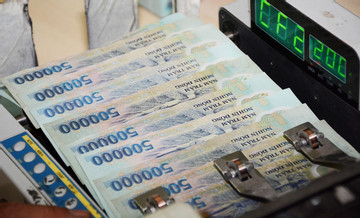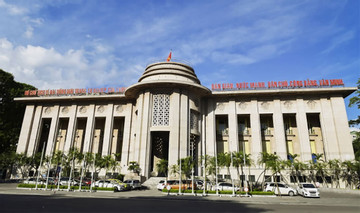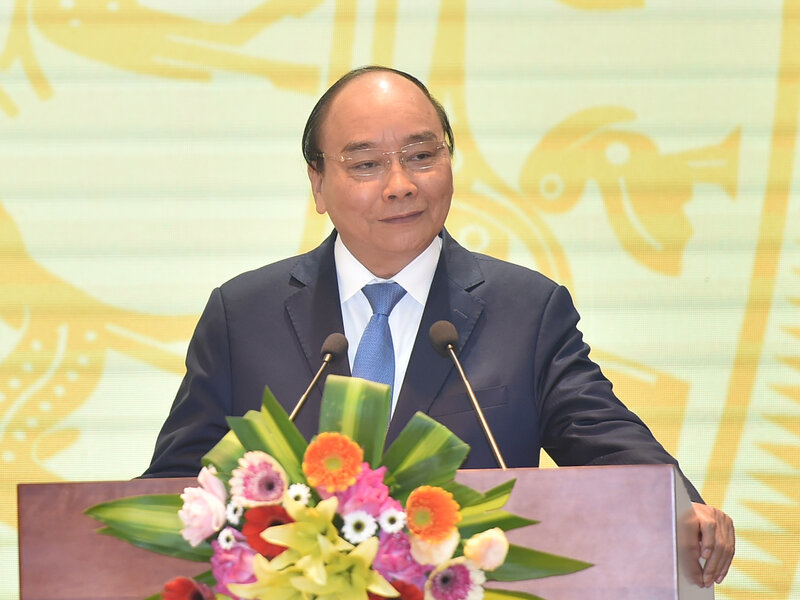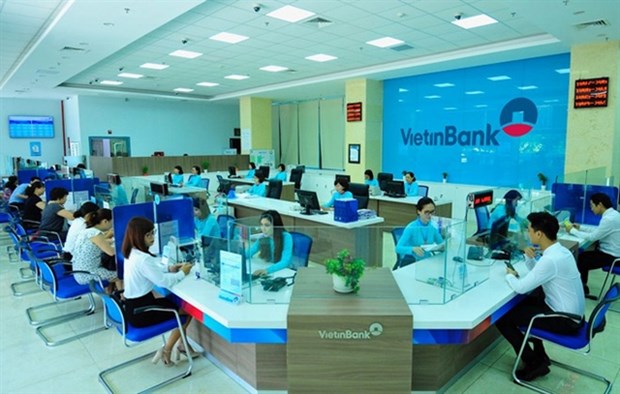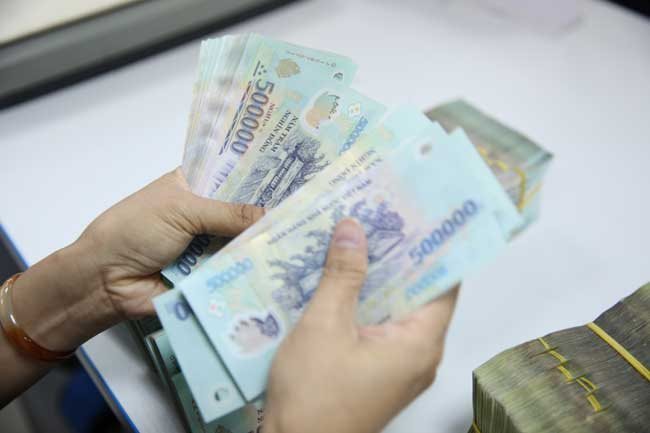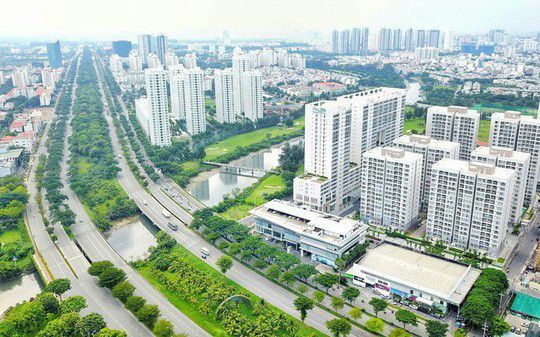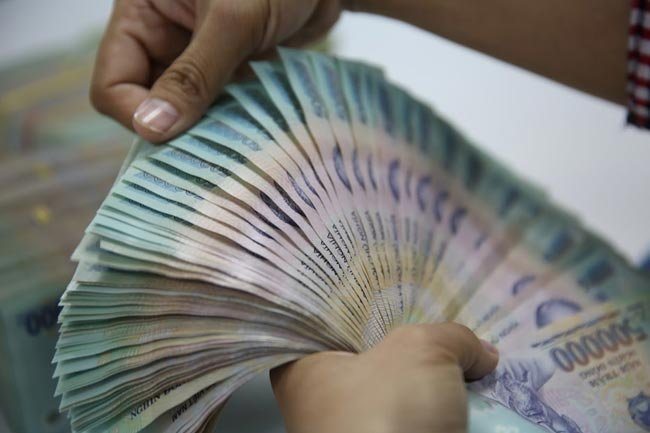- © Copyright of Vietnamnet Global.
- Tel: 024 3772 7988 Fax: (024) 37722734
- Email: evnn@vietnamnet.vn
credit growth
Update news credit growth
VN State Bank grants first credit growth quota for banks in 2023
The State Bank of Vietnam (SBV) has recently granted the first credit growth quotas in 2023 to a number of banks, with a majority of them receiving lower rates than last year.
SBV sets new credit growth limits for banks
Eight commercial banks have received new credit growth quotas for this year, with seven of them entitled to lend less than last year.
Several banks get extra room to lend
The State Bank of Vietnam (SBV) on September 7 raised credit growth quotas for several banks, paving the way for these lenders to make new loans for clients.
Banks criticized for sky-high interest rates, burdening businesses
Many banks made a high profit in 2021 thanks to high lending interest rates. However, they have been warned of ‘making a rod for their own back’.
Prime Minister urges banks to further cut interest rates
The Central bank has lowered its interest rate cap three times by a combined of 1.5-2 percentage points per annum, which is the largest cut in the region.
Vietnam banking sector to suffer in 2020 before rebounding in 2021
Fitch Solutions expected credit growth to weaken to 7% in 2020 from 13.7% in 2019, but the growth is predicted to pick up to 12% one year later.
Local banks slash interest rates to boost home, car loans
Since credit has been growing slowly because of low demand from businesses, commercial banks have increased the number of consumer loans to ‘liberate’ their plentiful capital.
Bank lending expected to get out of coronavirus doldrums soon
Experts have forecast bank credit growth in the second quarter to reach 3.5-4 percent, much higher than the rate in the first quarter.
Vietnam credit growth slows to 2.13% in 6-month period
Credit demand in Vietnam is expected to stay low in the foreseeable future as the Covid-19 pandemic continues to be complicated globally, said a central banker.
Local banks expect credit growth extension
Many commercial banks are proposing the central bank to extend credit growth limits as they have nearly reached the allowed threshold.
COVID-19 woes to weigh on credit growth even with lower interest rates
 Vietnam’s credit growth is forecast to slow to only 8 percent in 2020 from 13.7 percent last year due to a sharp slowdown in economic activity amid the COVID-19 pandemic.
Vietnam’s credit growth is forecast to slow to only 8 percent in 2020 from 13.7 percent last year due to a sharp slowdown in economic activity amid the COVID-19 pandemic.
Epidemic causes credit growth to slow significant in first two months
 Credit growth of the banking system in the first two months of this year reached only 0.06 percent, slowing significantly against the 1 percent rate in the same period last year, due to impacts of the COVID-19 epidemic.
Credit growth of the banking system in the first two months of this year reached only 0.06 percent, slowing significantly against the 1 percent rate in the same period last year, due to impacts of the COVID-19 epidemic.
Credit growth below expectations
 Vietnam’s credit growth, as of December 20, was reported at 12.1%, way below the 14% target set by the State Bank of Vietnam, according to the General Statistics Office.
Vietnam’s credit growth, as of December 20, was reported at 12.1%, way below the 14% target set by the State Bank of Vietnam, according to the General Statistics Office.
Where will capital flow?
 As the real estate market is on the decline, cash flow will shift to other investment channels, analysts say.
As the real estate market is on the decline, cash flow will shift to other investment channels, analysts say.
Profit of VN banks soar again
 Reporting high profits, Vietnamese commercial banks have once again lifted concerns about profit growth limits.
Reporting high profits, Vietnamese commercial banks have once again lifted concerns about profit growth limits.
Vietnam’s 2019 credit growth target considered unattainable
 Vietnam’s credit growth is projected to fall below the 14% target set for this year by the State Bank of Vietnam (SBV), due to lower-than-expected lending to businesses in the industry, construction and telecommunications sectors.
Vietnam’s credit growth is projected to fall below the 14% target set for this year by the State Bank of Vietnam (SBV), due to lower-than-expected lending to businesses in the industry, construction and telecommunications sectors.
Vietnam’s credit growth projected to reach 10-year low of 13.2% in 2019
 The slow growth comes mainly from state-owned banks, which have become more stringent on their loan disbursements.
The slow growth comes mainly from state-owned banks, which have become more stringent on their loan disbursements.
Credit quotas at banks close to running out mid-year
 The demand for capital in the national economy usually increases in the second half of year. However, banks have nearly used up the credit quotas granted to them.
The demand for capital in the national economy usually increases in the second half of year. However, banks have nearly used up the credit quotas granted to them.
Forex reserves reach highest level to date
 The State Bank of Vietnam (SBV) obtained a large amount of foreign currencies in the first half of 2019, pushing foreign exchange reserves recorded in the period to the highest level to date.
The State Bank of Vietnam (SBV) obtained a large amount of foreign currencies in the first half of 2019, pushing foreign exchange reserves recorded in the period to the highest level to date.
Banks now targeting SMEs for disbursement
 Instead of turning their back to small and medium-sized enterprises (SMEs) as they did in the past, commercial banks are approaching enterprises despite problems in accounting and collateral.
Instead of turning their back to small and medium-sized enterprises (SMEs) as they did in the past, commercial banks are approaching enterprises despite problems in accounting and collateral.

